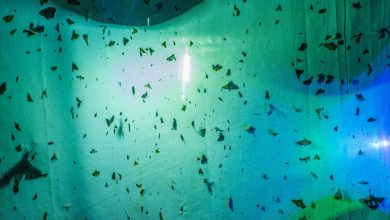The Early Universe Was Bananas

What does a newborn galaxy look like?
For the longest time, many astrophysicists and cosmologists have assumed that newborn galaxies would look like the orbs and spidery discs familiar in the modern universe.
But according to an analysis of new images from the James Webb Space Telescope, baby galaxies were neither eggs nor discs. They were bananas. Or pickles, or cigars, or surfboards — choose your own metaphor. That is the tentative conclusion of a team of astronomers who re-examined images of some 4,000 newborn galaxies observed by Webb at the dawn of time.
“This is both a surprising and unexpected result, though there were already hints of it with Hubble,” said Viraj Pandya, a postdoctoral fellow at Columbia University, referring to the Hubble Space Telescope. He is the lead author of a paper soon to be published in the Astrophysical Journal under the provocative title “Galaxies Going Bananas.” Dr. Pandya is scheduled to give a talk about his work on Wednesday at a meeting of the American Astronomical Society in New Orleans.
If the result holds, astronomers say that it could profoundly alter their understanding of how galaxies emerge and grow. It could also offer insight into the mysterious nature of dark matter, an unknown and invisible form of matter that astronomers say makes up a major part of the universe and outweighs atomic matter 5 to 1. Dark matter engulfs galaxies and provides the gravitational nurseries in which new galaxies arise.
We are having trouble retrieving the article content.
Please enable JavaScript in your browser settings.
Thank you for your patience while we verify access. If you are in Reader mode please exit and log into your Times account, or subscribe for all of The Times.
Thank you for your patience while we verify access.
Already a subscriber? Log in.
Want all of The Times? Subscribe.



